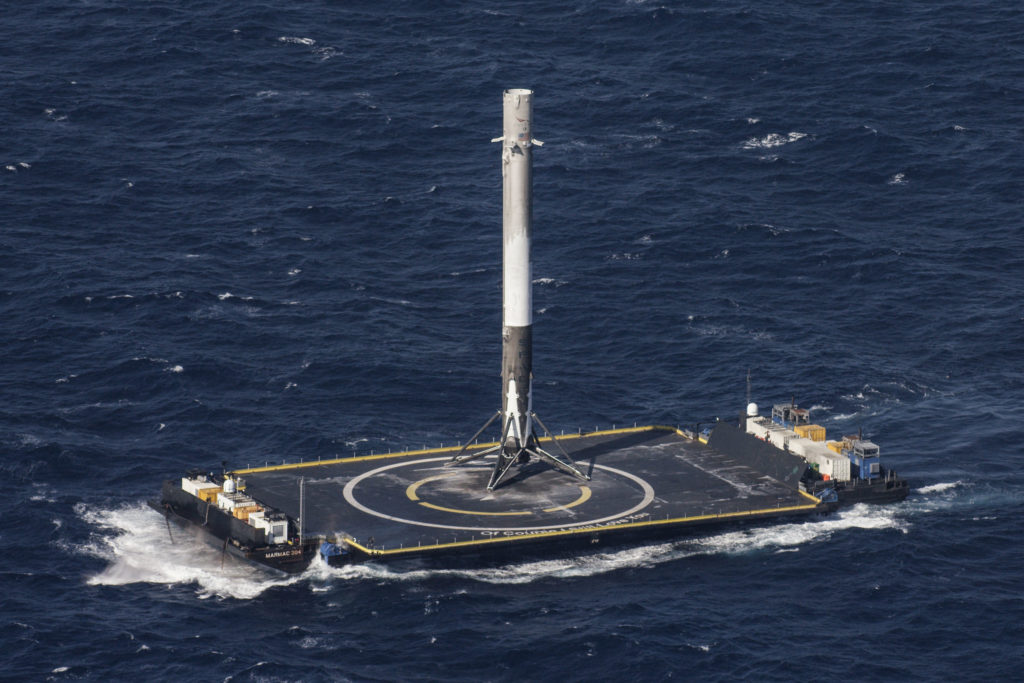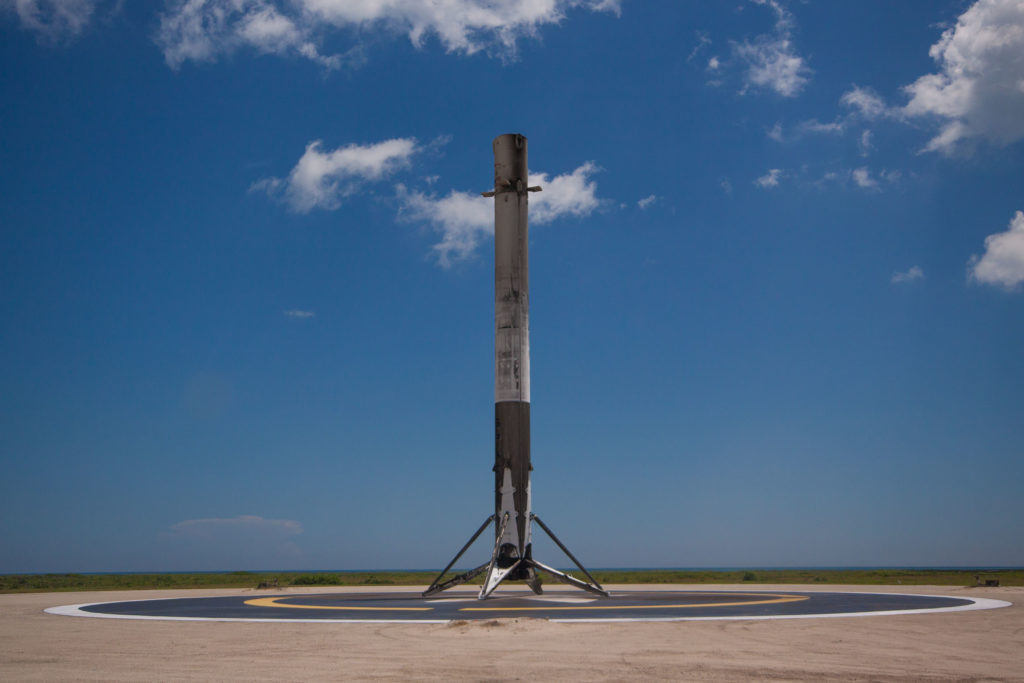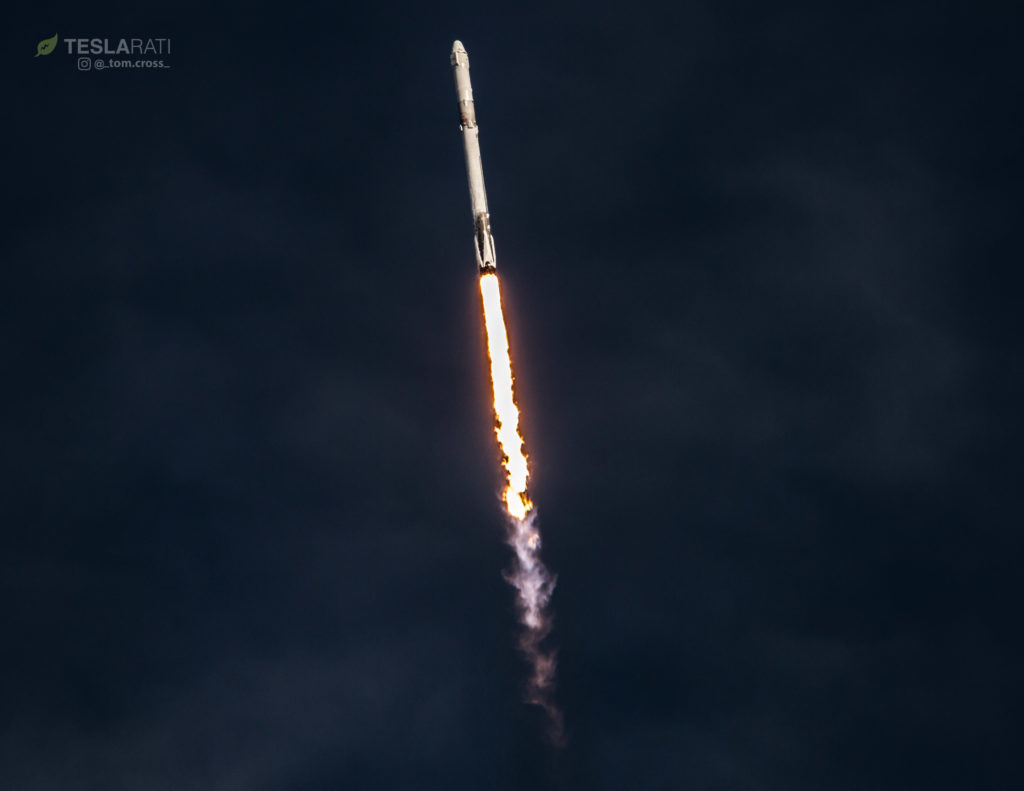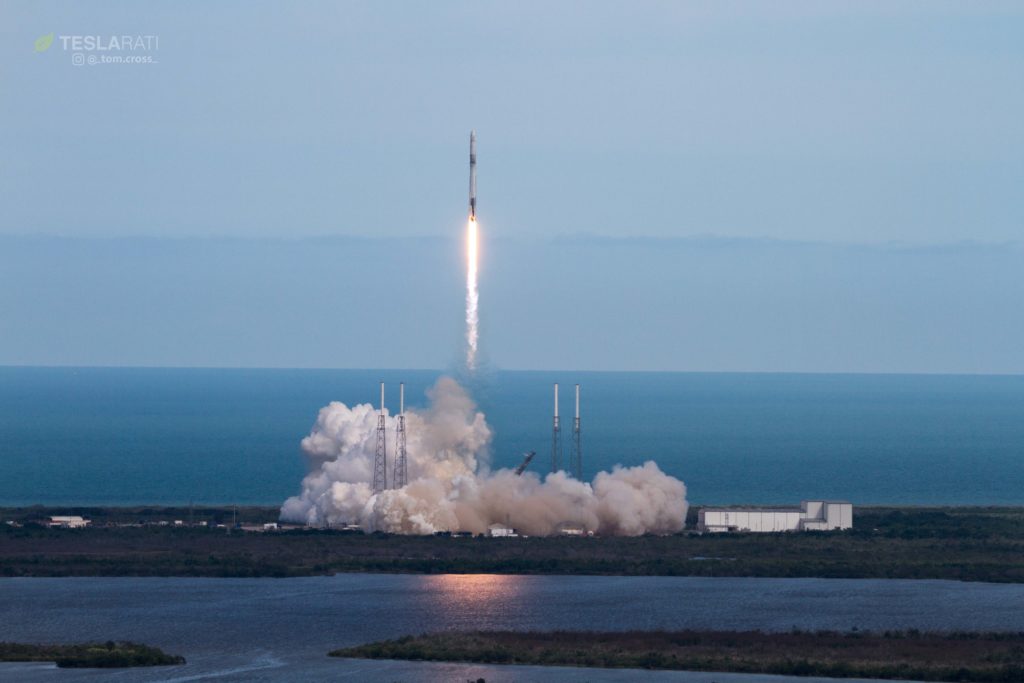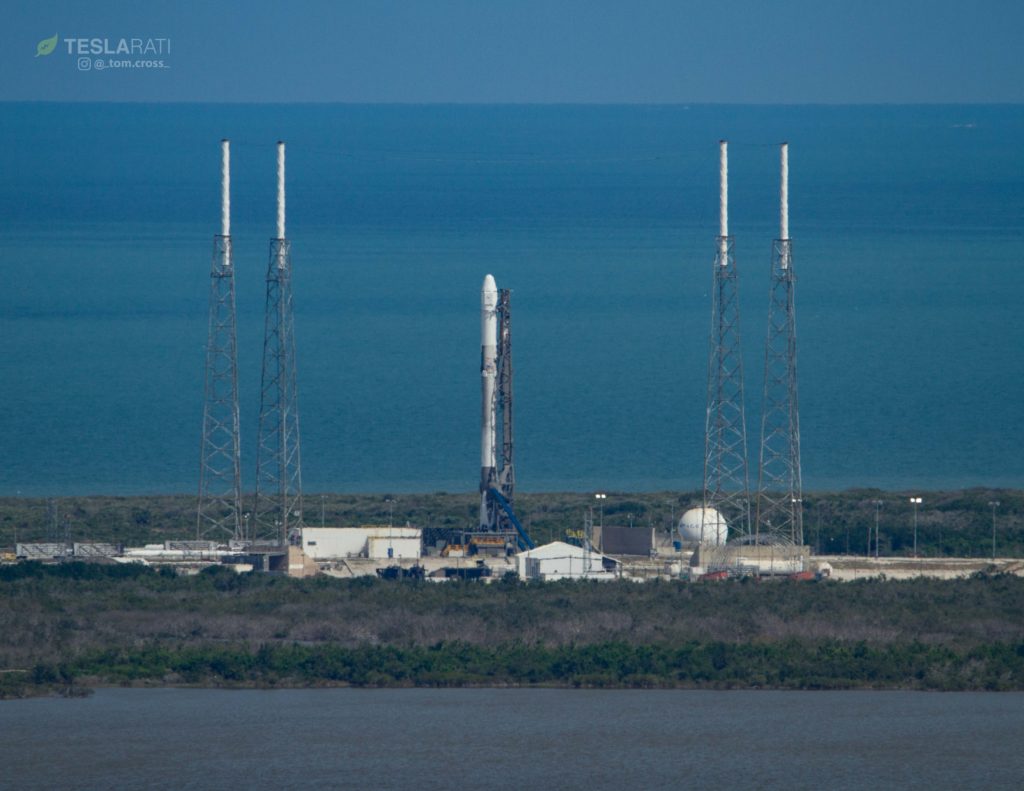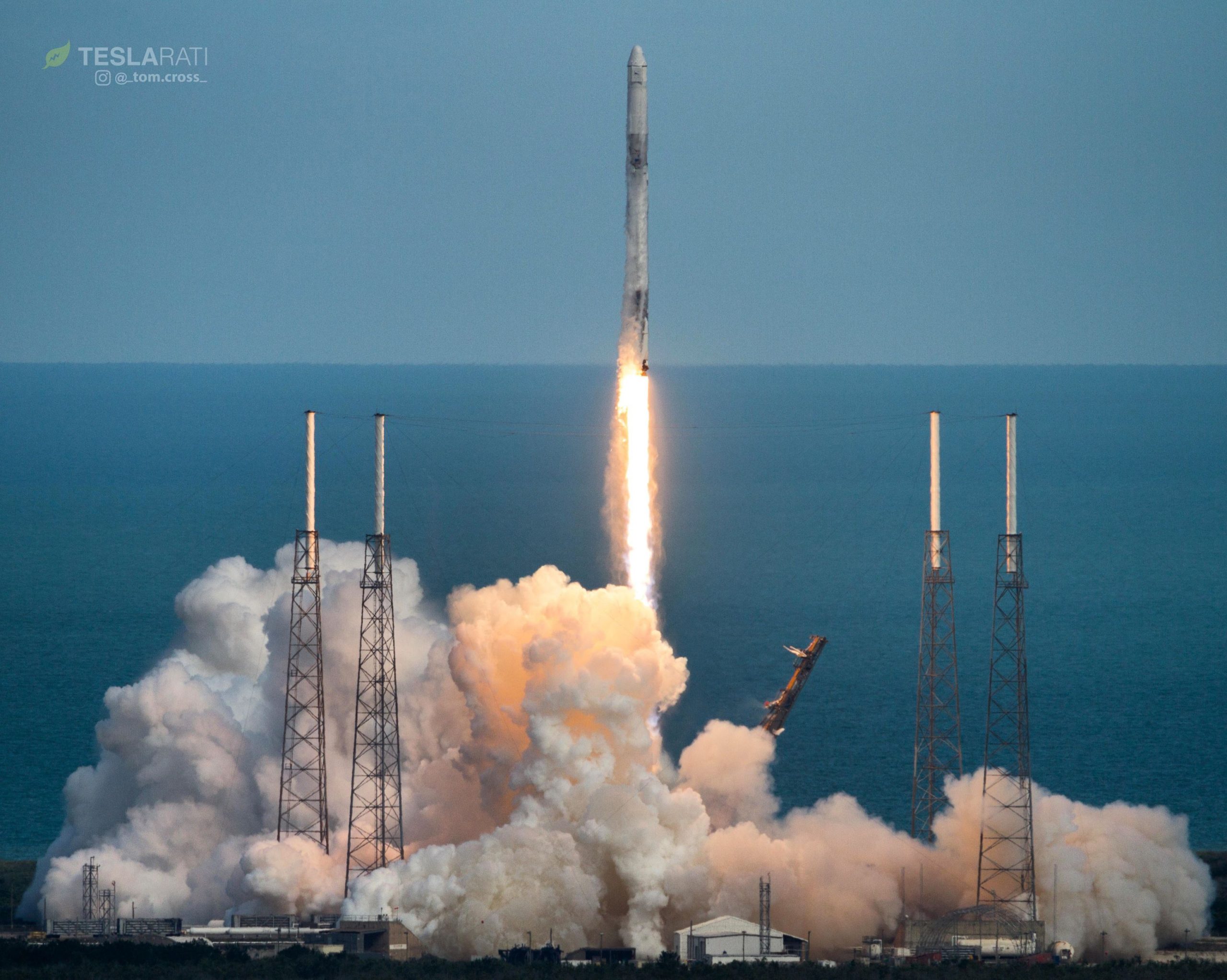
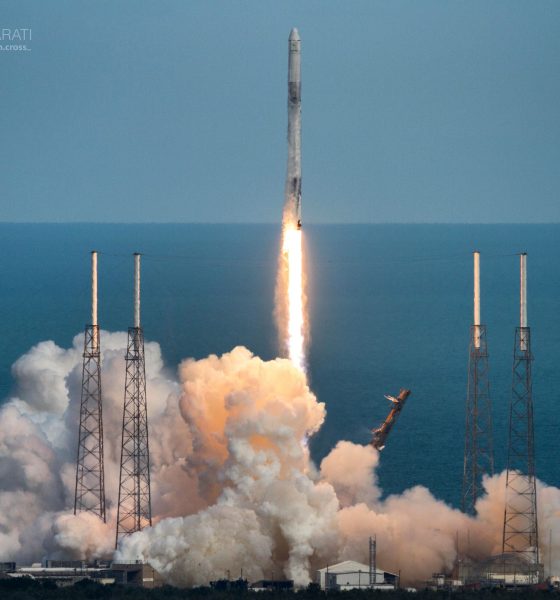
News
SpaceX continues water landing test in latest Space Station resupply mission
SpaceX has completed their second launch in less than four days, and the company’s 14th Cargo Dragon mission has successfully made it to a safe parking orbit where it will make its way to the International Space Station over the next two days.
Carrying nearly 5,800 pounds of perishables, experiments, and scientific equipment to be bolted to the outside of the ISS, this particular Cargo Dragon flew once before in 2016, while the booster that lifted it above Earth’s thin atmosphere was tasked with launching CRS-12 in August 2017. According to Jessica Jensen, SpaceX’s Director of Dragon Mission Management, this particularly Dragon capsule was the first to fly with upgraded water sealing, meaning that it was considerably easier (and thus cheaper) for SpaceX to refurbish and refly. The only items that had to be replaced this time around were the heatshield, trunk, and parachutes, and this experience will undoubtedly translate into Dragon 2 (Cargo Dragon), likely ensuring exceptional reuse characteristics for that the company’s next-gen capsule.
- CRS-8 also happened to mark the first successful ASDS recovery of a Falcon 9 booster. (SpaceX)
- Booster 1039 lands after successfully launching CRS-12’s Cargo Dragon into orbit. 1039 completed its final mission on Monday afternoon, April 2. (SpaceX)
Sadly, CRS-14’s doubly flight-proven launch also marked yet another expended booster – B1039 happened to be the first Block 4 version of Falcon 9’s stage to fly a mission. Jensen described that SpaceX – accustomed to making these decisions on a case-by-case basis – had chosen to expend this particular booster after concluding that the benefits of testing extreme booster trajectories and recovery profiles outweighed the difficulty (and cost) of refurbishing a Block 4 booster for a third launch. In this case, B1039 would have been the best option if SpaceX had any desire to fly a booster more than twice before the introduction of the purpose-driven, next-generation Block 5 reusability upgrade – Block 4 was clearly not built to fly more than twice without an uneconomical amount of refurbishment.
https://twitter.com/_TomCross_/status/980912458280947722
While no specific details were given and live coverage shown of the soft-landing, it’s presumed that B1039 continued in the footsteps of water landings that followed GovSat-1 and Hispasat 30W-6 in January 2018 and March 2018. These uniquely aggressive landing attempts are all believed to have ignited three Merlin 1D engines rather than the single engine typically ignited for landing burns, providing a more efficient use of propellant reserves at the cost of extreme acceleration (G) forces and far slimmer margins of error. The ultimate promise of these tests, if successful, is to allow SpaceX the option of recovering boosters during missions with heavier payloads and higher orbits.

SpaceX continues a cautious regiment of tests for the newest Falcon 9 upgrade, Block 5. (Reddit /u/HollywoodSX)
The imminent NET April 24 inaugural launch of SpaceX’s rapid reuse Falcon 9 “Block 5” will mark the beginning of a new era of rocketry for SpaceX, where expendable missions are likely to become a rarity. Expending a single Block 5 booster could fairly be perceived as throwing away the potential revenue and income from anywhere from 5-100 future re-flights. As such, SpaceX has every reason to expend non-Block 5 boosters with the hope of ensuring that fewer new-generation rockets end up expended after launch.
This rocket was meant to test very high retrothrust landing in water so it didn’t hurt the droneship, but amazingly it has survived. We will try to tow it back to shore. pic.twitter.com/hipmgdnq16
— Elon Musk (@elonmusk) January 31, 2018
Intriguingly, Jensen also noted in a prelaunch briefing that SpaceX’s Cargo Dragons are certified for as many as three orbital reuses – a possibility as SpaceX steps towards completing all 20 of its contracted CRS-1 missions, the final five of which are scheduled to resupply the ISS between now and early 2020. After the final CRS-1 launch, NASA has already awarded SpaceX and Orbital ATK contracts for CRS-2, a second Commercial Resupply Services contract that will begin in 2020 and fly on OATK’s upgraded Cygnus and SpaceX Dragon 2, potentially repurposing recovered Crew capsules in the case of SpaceX.
Up next on the SpaceX calendar are a number of conferences and presentations over the next two or three weeks, followed by SpaceX NASA TESS mission on April 16 and the debut of Falcon 9 Block 5 for the launch of Bangabandhu-1, April 24. SES-12 may be launched sometime in early May or late April, and the next West coast launch of Iridium-6/GRACE-FO is expected to occur NET May 10.
- CRS-14. (Tom Cross)
- CRS-14. (Tom Cross)
- CRS-14. (Tom Cross)
- CRS-14. (Tom Cross)
- CRS-14. (Tom Cross)
- CRS-14. (Tom Cross)
- CRS-14. (Tom Cross)
- SpaceX technicians work at the base of Falcon 9 B1039 ahead of launch, CRS-14. (Tom Cross)
- CRS-14. (Tom Cross)
- CRS-14. (Tom Cross)
Follow us for live updates, behind-the-scenes sneak peeks, and a sea of beautiful photos from our East and West coast photographers.
Teslarati – Instagram – Twitter
Tom Cross – Twitter
Pauline Acalin – Twitter
Eric Ralph – Twitter

News
Tesla FSD V14.2 starts rolling out to initial batch of vehicles
It would likely only be a matter of time before FSD V14.2 videos are posted and shared on social media.
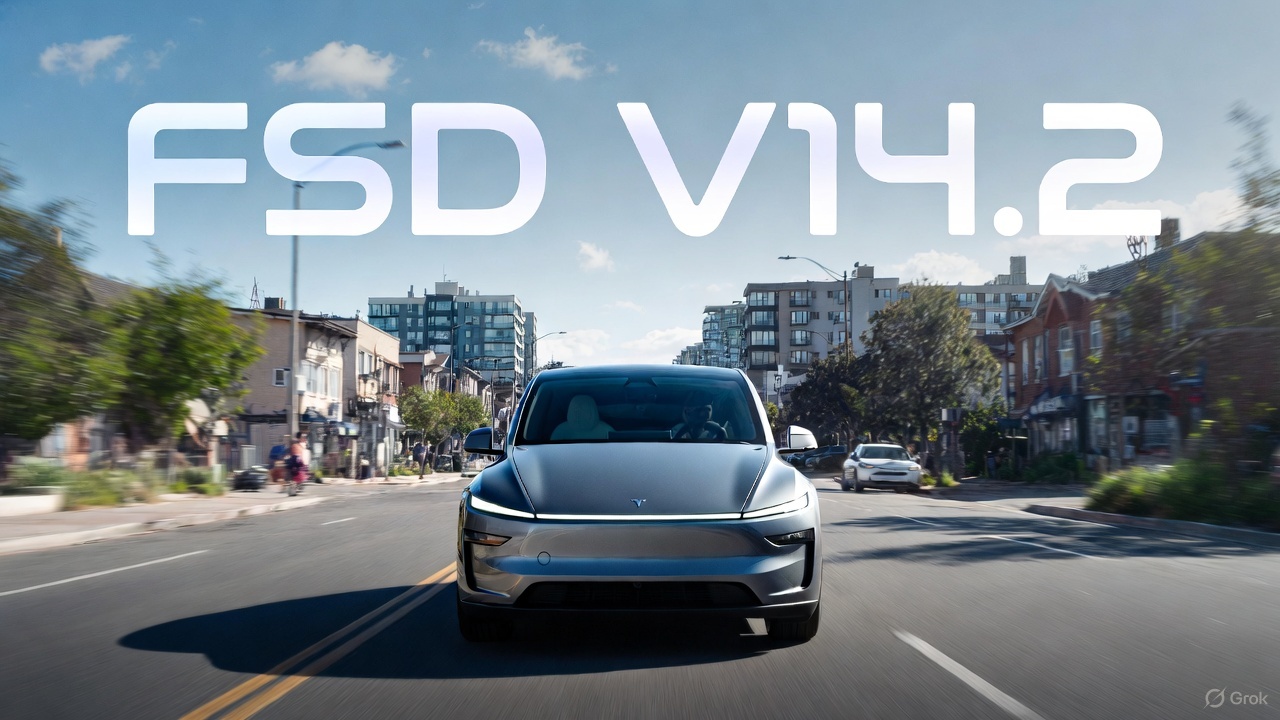
Tesla has begun pushing Full Self-Driving (Supervised) v14.2 to its initial batch of vehicles. The update was initially observed by Tesla owners and veteran FSD users on social media platform X on Friday.
So far, reports of the update have been shared by Model Y owners in California whose vehicles are equipped with the company’s AI4 hardware, though it would not be surprising if more Tesla owners across the country receive the update as well.
Based on the release notes of the update, key improvements in FSD V14.2 include a revamped neural network for better detection of emergency vehicles, obstacles, and human gestures, as well as options to select arrival spots.
It would likely only be a matter of time before FSD V14.2 videos are posted and shared on social media.
Following are the release notes of FSD (Supervised) V14.2, as shared on X by longtime FSD tester Whole Mars Catalog.
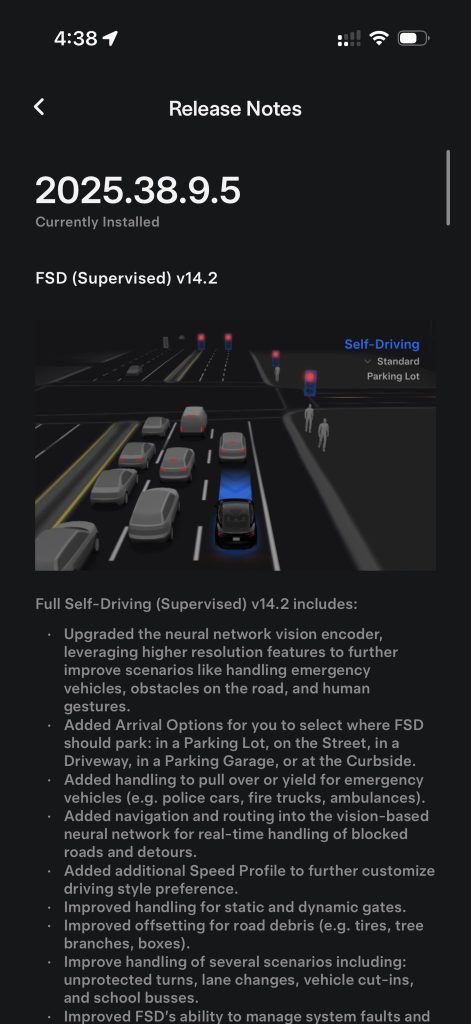
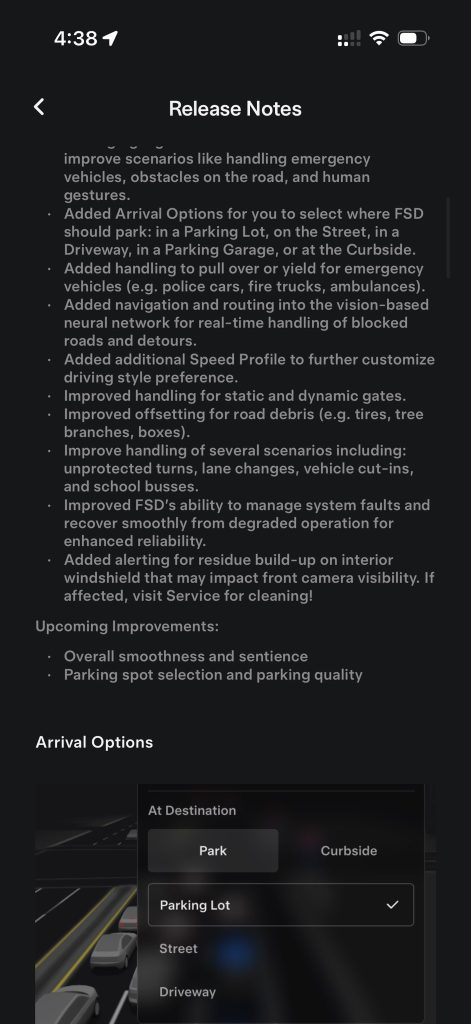
Release Notes
2025.38.9.5
Currently Installed
FSD (Supervised) v14.2
Full Self-Driving (Supervised) v14.2 includes:
- Upgraded the neural network vision encoder, leveraging higher resolution features to further improve scenarios like handling emergency vehicles, obstacles on the road, and human gestures.
- Added Arrival Options for you to select where FSD should park: in a Parking Lot, on the Street, in a Driveway, in a Parking Garage, or at the Curbside.
- Added handling to pull over or yield for emergency vehicles (e.g. police cars, fire trucks, ambulances.
- Added navigation and routing into the vision-based neural network for real-time handling of blocked roads and detours.
- Added additional Speed Profile to further customize driving style preference.
- Improved handling for static and dynamic gates.
- Improved offsetting for road debris (e.g. tires, tree branches, boxes).
- Improve handling of several scenarios including: unprotected turns, lane changes, vehicle cut-ins, and school busses.
- Improved FSD’s ability to manage system faults and improve scenarios like handling emergency vehicles, obstacles on the road, and human gestures.
- Added Arrival Options for you to select where FSD should park: in a Parking Lot, on the Street, in a Driveway, in a Parking Garage, or at the Curbside.
- Added handling to pull over or yield for emergency vehicles (e.g. police cars, fire trucks, ambulances).
- Added navigation and routing into the vision-based neural network for real-time handling of blocked roads and detours.
- Added additional Speed Profile to further customize driving style preference.
- Improved handling for static and dynamic gates.
- Improved offsetting for road debris (e.g. tires, tree branches, boxes).
- Improve handling of several scenarios, including unprotected turns, lane changes, vehicle cut-ins, and school buses.
- Improved FSD’s ability to manage system faults and recover smoothly from degraded operation for enhanced reliability.
- Added alerting for residue build-up on interior windshield that may impact front camera visibility. If affected, visit Service for cleaning!
Upcoming Improvements:
- Overall smoothness and sentience
- Parking spot selection and parking quality
News
Tesla Model X lost 400 pounds thanks to these changes
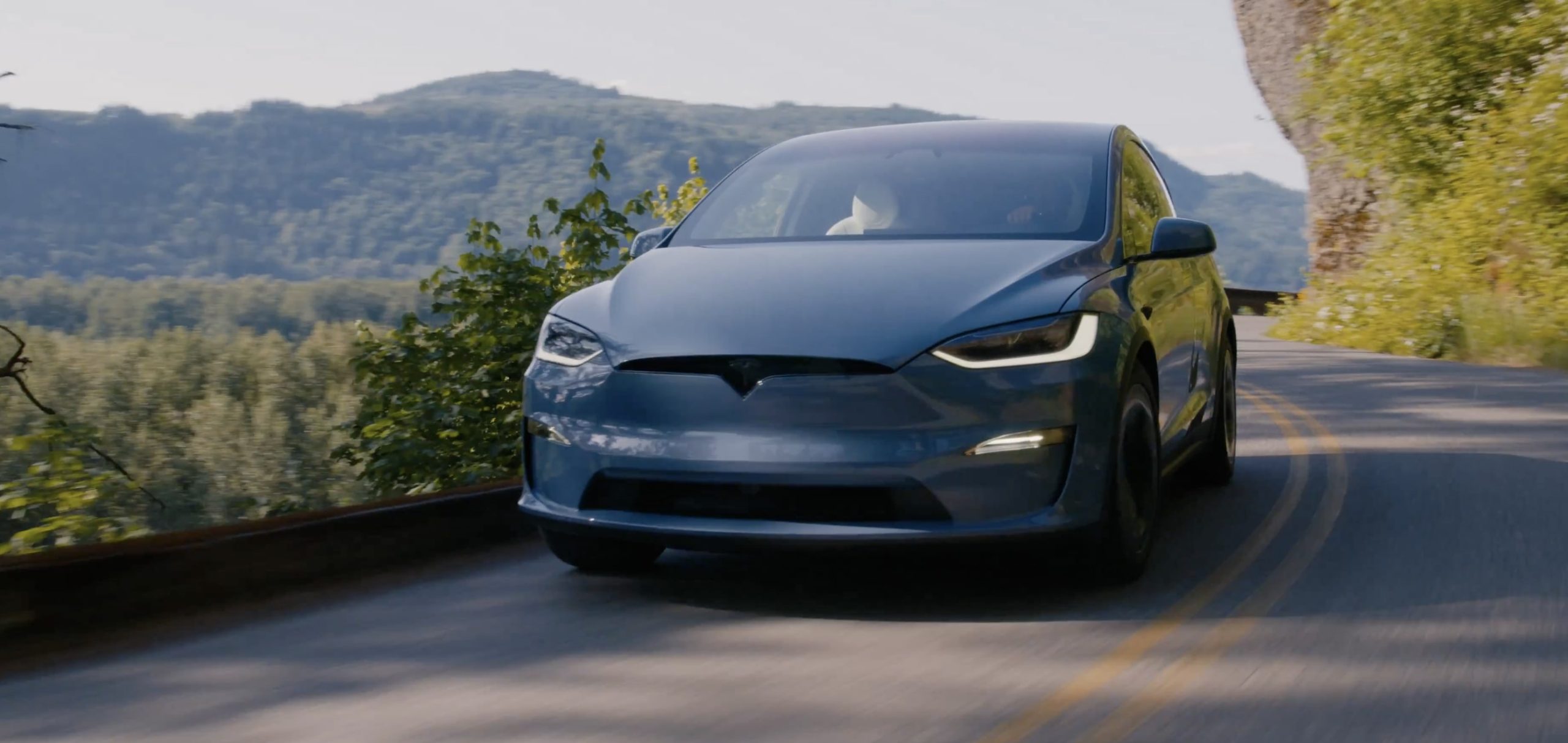
The Tesla Model X has always been one of the company’s most loved vehicles, despite its low sales figures, which can be attributed to its high price tag.
However, the Model X has been a signature item on Tesla’s menu of cars, most notably recognized by its Falcon Wing Doors, which are aware of its surroundings and open according to what’s around it.
But recent improvements to the Model X were looking slim to none, but it appears most of the fixes actually happened under the body, at least according to Tesla’s Vice President of Powertrain, Lars Moravy.
In a recent interview with Car and Driver, Moravy detailed all of the changes to the 2026 iteration of the vehicle, which was about 400 pounds lighter than it was originally. The biggest change is a modification with the rear motor, switching from an induction-type motor to a permanent-magnet design and optimizing the half-shafts, which shed about 100 pounds.
Tesla also got “almost 80 pounds out of the interior bits and pieces,” which “included making parts thinner, different manufacturing process choices, and incorporating airbag-deployment requirements into the headliner fabric,” the report said.
Additionally, the standard five-passenger, bench seat configuration saved 50 pounds by ditching pedestal mounting. This also helped with practicality, as it helped the seat fold flat. Engineers at Tesla also saved 44 pounds from the high-voltage wiring through optimizing the wiring from the charge-port DC/DC converter and switching from copper to aluminum wiring.
Tesla makes a decision on the future of its flagship Model S and Model X
Tesla also simplified the cooling system by reducing the number of radiators. It also incorporated Nürburgring cooling requirements for the Plaid variant, which saved nearly 30 pounds.
Many Tesla fans will be familiar with the megacastings, manufactured in-house by presses from IDRA, which also saves more than 20 pounds and boosts torsional stiffness by around 10 percent. Tweaks to the suspension also saved 10 pounds.
People were truly disappointed with what Tesla did with the Model S and Model X, arguing that the cars needed a more severe exterior overhaul, which might be true. However, Tesla really did a lot to reduce the weight of the vehicle, which helps increase range and efficiency. According to Grok, every 200 pounds removed adds between 7 and 15 percent to range estimations.
This makes sense considering the range estimations both increased by 7 percent from the Model X’s 2025 configuration to the 2026 builds. Range increased on the All-Wheel-Drive trim from 329 miles to 352 miles, while the Plaid went from 314 miles to 335 miles.
News
Tesla launches its new branded Supercharger for Business with first active station
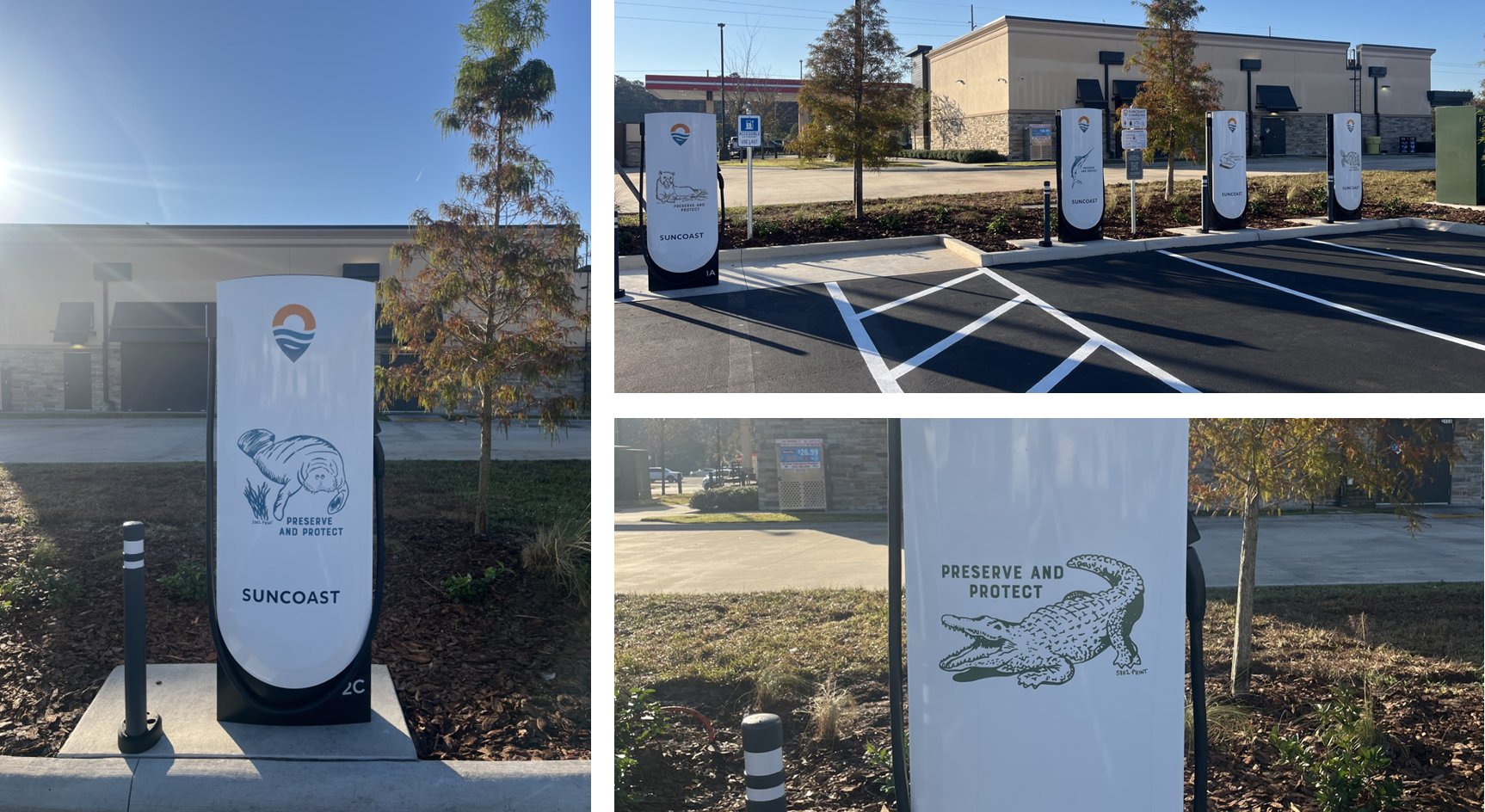
Tesla has officially launched its first branded Supercharger just months after initiating a new program that allows third-party companies to brand their own charging piles.
The site opened in Land O’ Lakes, Florida, and features eight V4 Supercharging stalls offering up to 325 kW of charging speed. It appears it was purchased by a company called Suncoast Credit Union. This particular branch is located Northeast of Tampa, which is on the Gulf of Mexico.
It features graphics of Florida animals, like alligators:
Here’s a video of the graphics being installed on the Tesla Superchargers at this site: https://t.co/oIfEPNZjAH pic.twitter.com/ENWakZ2qT9
— TESLARATI (@Teslarati) November 20, 2025
Tesla launched this program back in September, and it basically was a way to expand its Supercharger presence and also allow companies to pay for the infrastructure. Tesla maintains it. When it announced the “Supercharger for Business,” it said:
“Purchase and install Superchargers at your business. Superchargers are compatible with all electric vehicles, bringing EV drivers to your business by offering convenient, reliable charging.”
The program does a few things. Initially, it expands EV charging infrastructure and makes charging solutions more readily available for drivers. It can also attract people to those businesses specifically.
Tesla launches new Supercharger program that business owners will love
The chargers can also be branded with any logo that the business chooses, which makes them more personalized and also acts as an advertisement.
The best part is that the customers do not have to maintain anything about the Supercharger. Tesla still takes care of it and resolves any issues:
“We treat your site like we treat our sites. By providing you with a full-service package that includes network operations, preventative maintenance, and driver support, we’re able to guarantee 97% uptime–the highest in the industry.”
It appears the Superchargers will also appear within the in-car nav during routing, so they’ll be publicly available to anyone who needs to use them. They are still available to all EVs that have worked with Tesla to utilize its infrastructure, and they are not restricted to people who are only visiting the business.
